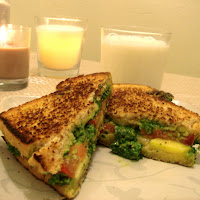So I decided to try my hand at dyeing my own hair, and I have never looked back. Since then, my hair has been everything from an orangey blond to a purplish black and pretty much all of the shades in between. For those of you coloring virgins, I have to admit it is rather addicting to be able to change your hair color on a whim. My sophomore year of college I had a new color every month.
After almost a decade of experience, I feel as though I have a wealth of knowledge in home hair coloring. With every hairdresser of mine lately commenting on how great and natural looking my color is, it seems as though this feeling is not unwarranted. I have realized the importance of keeping within two shades of your natural one. Roots blend in far easier, and it tends to complement your complexion better.
These days, hair coloring kits are basically foolproof. Most instructions are along the lines of: Squeeze the contents of tube A into tube B and shake until well mixed. Starting at your hairline, apply color until all of your hair is well coated. Wait 25 minutes and rinse with warm water until it runs clear. Apply the deep conditioner, let sit for 2 minutes, wash out and style as usual. I generally wait until the entire top of my head is covered; then turn my head upside down (gently so as not to spray color everywhere!) and begin again from the bottom of my scalp. Once I reach the crown, I gather my hair in one hand while alternately squirting and massaging big blobs of color throughout the ponytail with the other.
 My latest hairdresser advised my to use a shade darker for my roots, and one shade lighter for the rest of my hair. I found this was well worth the additional expense giving more dimension to the color. Currently, I am using Clairol Perfect 10 in Cinnamon Red Hot 4R for my roots and Auburn Flash 5R for the rest. This revolutionary dye only takes 10 minutes to work its magic! Instead of the comb applicator provided, I found the single tip easier to use. Target is a great spot to pick up hair dye. Typically, Clairol Perfect 10 retails for $13.99, but Target sells it for only $9.99.
My latest hairdresser advised my to use a shade darker for my roots, and one shade lighter for the rest of my hair. I found this was well worth the additional expense giving more dimension to the color. Currently, I am using Clairol Perfect 10 in Cinnamon Red Hot 4R for my roots and Auburn Flash 5R for the rest. This revolutionary dye only takes 10 minutes to work its magic! Instead of the comb applicator provided, I found the single tip easier to use. Target is a great spot to pick up hair dye. Typically, Clairol Perfect 10 retails for $13.99, but Target sells it for only $9.99.So how much do I pay for my color? $19.98 + tax. Not bad at all.




